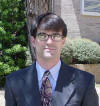|
Child-Centered
Early Childhood Music
by |
The Basics Types of Centers Planning and Implementation Advantages
|
A child-centered music room should have centers and activities that promote steady beat acquisition, rhythmic accuracy, singing in tune, sound exploration, fantasy play, technology, gross motor play. |
I strongly encourage you to make things for your room. Things that you can make will cost much less than things you buy out of a catalog, and will probably last much longer. Many things that are thrown away make great musical instruments. Your building janitor should become one of your best friends. If you haven't see them, go see STOMP. They have lots of ideas about how to reuse and recycle many different things to make music.
Types of Music Centers
-
Sound Exploration
-
Literacy
-
Strings
-
Percussion
-
Listening: Gross Motor and Stationary Listening
-
Home-Life
-
Jump Rope and Ball Games
-
Fantasy
-
Conducting
-
Water Music
-
Play parties and folk song games
|
It is often said that "a picture speaks a thousand words." In this case "a video speaks several thousand words." Below are several short video clips of a child-centered music room I established in an urban inner-city public school. The purpose of the clips is to give you a sense of what a child-centered music room might look like. Remember, this is not "the" child-centered music room, it is simply "a" child-centered music room. |
Centers Developed in an Urban Public School Setting
|
Watch a short video! |
|
-
Drums
The 5-gallon bucket drums are a great way to build an indestructible instrument. See instructions on how to make your own bucket drums. It's simply too bad most schools' janitorial staffs now get their floor stripper and cleaning solutions in cardboard boxes. -
Water Play
Most schools have a water table. Many times this is used as a sand table. Borrow one from a colleague and gets some ceramic bowls or metal bowls. The children are to fill the bowls with different levels of water and then observe how the sound changes. Then they can make music with the new and different sounds. -
Dramatic Play
Everyone wants to be the conductor. At this center I build a small podium, got an old music stand, a conducting baton (mallet), a surplus library stand to hold all my out of adoption TEs that I couldn't part with and "voilà," a dramatic play center. -
Technology
There are many obsolete video games that have a music game build into them. While computers are not as available as we might like, everyone has TVs. Most video game music programs require a "mouse like" device which is good practice for any computer application. The game featured here is "Mario Paint" and is a Super Nintendo game. I am sure you can find many student's who want or have the "Cube" and would be willing to loan (give) you their Super Nintendo. Write a note to all your parents asking for any video game equipment they are not using. Then find a music game application and place it in a technology music center. Lots of great musical things can happen there. -
Literacy
Your librarian has "loads" of picture books related to songs. I place these in a literacy center. The idea is that the children will go there and sing the songs as they read the book and look at the pictures. This center also gives them a place to be quiet. -
Exploration - tubes
This center gives the children an opportunity to explore making musical-type instruments with PVC sewer pipe. Their task is to put the pipes together, like Legos, and then hit the ends of the pipe. Different lengths with produce different sounds. Also see Building a PVC Center and Chime Trees. -
Gross Motor
Many of the circle time activities can be offered at center time. Here you see a listening activity that the children were introduced to in a prior lesson. I simply turned on the CD player and press the repeat button. Children could come and go from this activity, as they pleased. -
Listening Center
As the children learn more and more music, I record the songs and chants and place them on a cassette tape or burn a CD. Then the children can go to this center to sing the songs and play the finger games. Again, these are songs presented in their circle time (group instruction). The advantage to this is that I know the vocal model on the tape is giving the children many repetitions of a good vocal sound. -
Home Life
In this center I used rocking chairs and teddy bears. The chairs came from surplus equipment at my school and the bears came from various garage sales. Obviously, this center needs a bit of "dressing up," but it gives you some ideas of how to make a home life center. Ideally, this is where children would come to sing songs to their bears, possibly lullabies.
| If you would like to be added to the TSMP Email Mailing List and receive periodic notifications of new articles and updates to this website, then please email TSMP.
The Texas School Music
Project is a source for ideas and information
concerning pedagogical
practices in the music classroom or rehearsal hall. The TSMP is a service provided to
all music specialists by the faculty
of
the Department of Music
at Stephen F. Austin State University. Copyright ? 2002, Department of Music at Stephen F. Austin State University |
